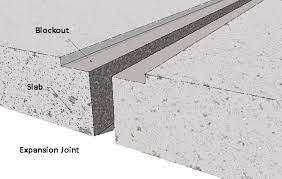Concrete, with its unparalleled strength and versatility, is a fundamental building material in construction. To ensure the durability and performance of concrete structures, the strategic incorporation of joints is crucial. Concrete joints serve various purposes, including accommodating movement, preventing cracks, and enhancing overall structural integrity. In this article, we delve into the significance of concrete joints, their types, and their applications in construction.
The Importance of Concrete Joints:
Concrete, although robust, undergoes changes due to temperature fluctuations, settling, and other environmental factors. Without proper joints, these changes can lead to cracking, compromising the structural integrity of the concrete. Concrete joint, when strategically placed, provide relief points that allow controlled movement, reducing the risk of cracks and ensuring the long-term stability of structures.
Types of Concrete Joints:
Control Joints:
Control joints, also known as contraction joints, are intentional breaks in the concrete that help control and minimize cracking caused by drying shrinkage. These joints typically straight lines and strategically placed at regular intervals. By allowing the concrete to contract and expand within these controlled areas, the risk of unsightly and potentially damaging cracks is mitigated.
Expansion Joints:
Expansion joints designed to accommodate the expansion of concrete caused by temperature variations. Unlike control joints, expansion joint filled with a compressible material, such as cork or rubber, that can absorb the movement without inducing stress on the concrete. These joint often use in large concrete slabs, such as those found in highways, bridges, and sidewalks.
Construction Joints:
Construction joints form when concrete is poured in stages or over different days. These joints act as intentional stopping points, allowing new concret to bond securely with the previously poured section. Construction joints are common in large projects, such as buildings and pavements, where pouring the entire structure in one go may not be feasible.
Isolation Joints:
Isolation joints are employed to separate different sections of a structure, preventing the transfer of loads and vibrations between them. These joints are crucial in preventing damage caused by differential settlement or movement in one part of the structure affecting another. Isolation joints often used in buildings with different foundation systems or where movement is expecte.
Contraction Joints:
Contraction joint are similar to control joint and use to control cracking due to the contraction of concrete during the curing process. These joint typically created by tooling or sawing the concrete surface. Contraction joints help guide cracks to specific locations, reducing the chances of random, uncontrolled cracking.
Saw-Cut Joints:
Saw-cut joint are created after the concrete has hardened by using saws to cut grooves into the surface. These joints are often used in decorative concrete applications, providing a clean and deliberate separation between sections. Saw-cut joints can also be employed to induce cracks in a controlled manner, preventing random and unsightly fractures.
Applications of Concrete Joints:
- Highways and Pavements: Control joints, expansion joints, and construction joints extensively use in the construction of highways and pavements. These joints prevent cracking caused by temperature changes and ensure the longevity and smoothness of road surfaces.
- Buildings and Bridges: Construction joints and isolation joints play a crucial role in the construction of buildings and bridges. They allow for staged construction, accommodate different foundation systems, and prevent the transfer of loads between different structural elements.
- Industrial Flooring: In large industrial facilities, where heavy machinery and equipment present, control joints and expansion joints employe in the flooring to prevent cracking and ensure a level and stable surface.
- Residential Construction: Control joints and construction joints commonly use in residential construction to control cracking in foundations, slabs, and walls. These joints contribute to the longevity and appearance of residential structures.
Conclusion:
Concrete joints are indispensable elements in the construction industry, ensuring the durability and stability of structures over time. Whether in highways, buildings, or industrial facilities, the strategic placement of control joints, expansion joints, and other types of joint is essential to mitigate the impact of environmental factors on concrete. As construction practices evolve, the understanding and implementation of effective jointing techniques continue to be paramount in creating resilient and long-lasting concrete structures.

